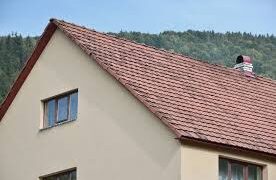Eco-friendly design and building is the most effective path to sustainability. It goes beyond a mere focus on the environment, using fresh, local materials. It’s about creating healthy places where people can live and work. An eco-friendly design meets strict criteria of minimal impact on the environment and considers the health & safety of those working on and living in the building.
Eco-friendly designs are the first domino to fall in the chain of sustainable cities. Buildings should be designed to use less energy and maximize natural light while they are being built and as we continue to improve technologies for efficiency. By implementing eco-friendly design, we can make it easy to educate others and help raise awareness of one crucial aspect of our communities.
How Eco-Friendly Designs Impact the Environment Positively
Eco-Friendly designs and building solutions have become a staple in modern architecture more than conventional, less efficient design methods. The application of green design principles aims to design and construct buildings with a priority on environmental responsibility, resource conservation, energy efficiency, and occupant health.
The eco-friendly building design process includes all aspects of the building, from a conscious choice of materials used to the way it is built and the ideal operating conditions once it has been completed. In addition, eco-friendly building designers have developed new techniques for constructing healthy living environments.
Before starting a new building project, you must choose the right design and build company that has experience building eco-friendly solutions into their plans. This will ensure that you are making a genuinely eco-friendly project made from sustainable materials and using best practices such as low VOC paints.
Advantages of Eco-Friendly Designs and Building Solutions
People are now choosing from sustainable materials like bamboo, and eco-friendly houses can be built within a few days using hemp. You might want to consider an eco-friendly design if you are a construction company of any size. There are many advantages to eco-friendly – from air quality and water usage to saving money and reducing your environmental impact.
Energy Savings
Minimizing your environmental impact begins with the energy you use in your building and making sure that you are using renewable energy sources. This depends on the power grid in your region; if you are lucky enough to live where they can take advantage of solar panels, wind power, and electric car charging stations, design with these in mind.
Improved Indoor Air Quality
Indoor air quality can be a big problem for some people. This is true, especially for new construction projects in offices, schools, hospitals, and large buildings. To help improve the air quality, use paint and glues that produce as little VOC as possible. In addition, use high-quality ventilation systems and filters in your HVAC system to help clean the air before it is distributed to the building occupants.
Water Conservation
A rain garden is among the best ways to conserve water easily. Rain gardens are planted with native plants and used for drainage and beautification. Instead of sending all of your gray water down the drain, consider collecting it in a tank and then using it to water your new rain garden. This adds beauty as well as saves on resources.
Less Waste
You can minimize construction waste by using non-toxic products and materials. Using recycled building materials is so important because it means less waste going into our landfills and oceans and provides for the maintenance of green spaces. It is also good to ensure that everything is recycled, even if it requires additional labor on your part to do so.
Reducing construction waste, energy, water usage, and sustainable materials can help make your new building a return on investment.




